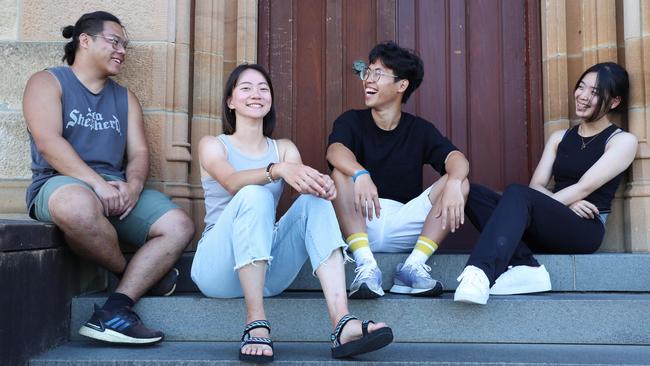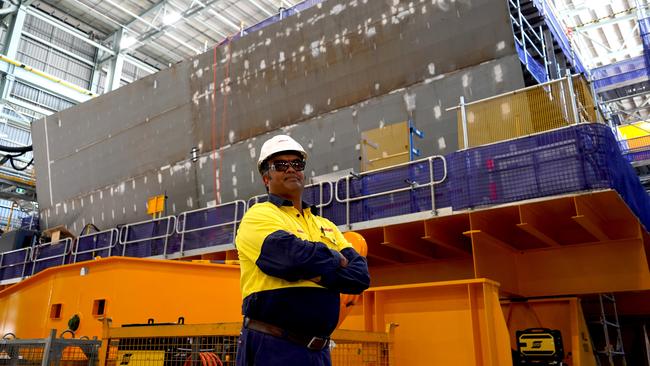Australia’s multicultural journey: from historical roots to modern challenges and opportunities
Diversity is key to Australia’s population journey, from historical roots to modern challenges and opportunities.

Australia’s multicultural identity has been a defining feature throughout its history. The nation’s culture, economy, and consumer behaviour have all been significantly shaped by its diverse population. Australia has been a land of immigrants since European settlement, with a consistent influx of new arrivals, resulting in continuous national population growth.
The first comprehensive census conducted in 1891 indicated that approximately 32 per cent of the population was born overseas, reflecting the substantial immigration waves in the preceding years.
This demographic diversity has enriched Australia’s cultural fabric but this percentage dropped to as low as 10 per cent in 1947, largely due to reduced immigration during periods such as World War I, the Great Depression, and World War II.
In the post-war era, immigration patterns rebounded quickly, leading to a steady rise in the overseas-born population. In 2021, this trend had a temporary setback due to Covid-19 travel restrictions, affecting incoming and outgoing migration flows.
Fewer people born overseas immigrated to Australia, and fewer Australians born in the country departed for living abroad. Nonetheless, this circumstance was short-lived, with the relaxation of travel restrictions leading to a stronger expansion of the overseas-born population.
The Australian Bureau of Statistics (ABS) regularly publishes comprehensive data on the country’s overseas-born population. The most recent, released on October 31, reveals that as of June 30, 2022, Australia’s population was estimated at 26 million. Of this total, 18.3 million were born in Australia, and 7.7 million residents were born overseas.
The proportion of Australia’s overseas-born population increased from 29.3 per cent in 2021 to 29.5 per cent in 2022, with a net growth of 155,000 individuals.
While this figure remains slightly below the pre-Covid level of 29.9 per cent, in 2020 it is expected to match or exceed those levels considering the migration assumptions for 2023.
Australia proudly stands as one of the most culturally diverse populations and continues to have rapid growth and diversification, even in the face of the pandemic. When compared to the top 15 economies worldwide, Australia remains the frontrunner.
Canada, at No.2 on this list, has just 21 per cent of its population born overseas, illustrating a significant 9-percentage point difference. Following Canada, Germany is at 19 per cent, the USA and Spain at 15 per cent, and Britain at 14 per cent.

This data highlights Australia’s unwavering dedication to multiculturalism, showcasing the nation’s embrace of diverse cuisines, lifestyles, shopping habits, and the significance of cultural sensitivity. It positions Australia as a global pioneer in nurturing cultural diversity and inclusiveness, with virtually every country worldwide being represented.
The English-born population remains the largest group among Australia’s overseas-born population, a trend that has persisted since the 1901 Census.
In 1901, about 495,500 individuals were from the United Kingdom, constituting 58 per cent of the total overseas-born population. This number has grown to 961,000 individuals in 2022, making up 12 per cent of the overseas-born population.
The Indian-born population was the second-largest group among Australia’s overseas-born population in 2022, at 754,000 people. Indian-born individuals now represent about 3 per cent of the total Australian population and 10 per cent of the total overseas-born population. This represents significant growth from the 2001 census, when there were just 95,000 Indian-born individuals. The Chinese-born population, while substantial, dropped from its peak; 661,000 in 2019, to 597,000 individuals in 2022. Despite this decrease, it remains a significant part of Australia’s diverse population.
Australia’s foreign-born population typically falls into one of three categories: skilled migrants and their families (often holding permanent or long-term visas), temporary visitors, primarily including students, working holidaymakers, tourists, and temporary skilled workers, and humanitarian visa recipients.
Recent data from the ABS showed there were about 1.6 million temporary visa holders and 25,000 overseas visitors at the time of the 2021 Census.
Likewise, as of August 2021, there were about 3 million permanent migrants in Australia who had arrived in the country since the year 2000.
Among these, 1.7 million (59 per cent) were skilled migrants, 962,000 (32 per cent) were family members of skilled migrants, and 284,000 (9 per cent) held humanitarian visas.
Australia’s migration scheme offers numerous advantages.

Skilled migrants have effectively countered population ageing, enhanced labour productivity, and enabled businesses to access skills that are often in short supply. Moreover, unemployment rates among skilled migrants are notably lower than those in the general population.
To illustrate, the labour force participation rates for skilled migrants reached an impressive 81 per cent in the 2021 census.
There’s substantial evidence indicating that migrants play a vital role in supporting long-term economic growth.
A 2015 Intergenerational Report published by Australian Government estimated that, over the 40-year period up to 2015, population factors contributed almost 18 per cent of the annual average GDP per capita growth of 1.7 per cent.
This was primarily driven by an increase in the working-age population, demonstrating how migration aided the economy in effectively navigating challenges such as the Global Financial Crisis and subsequent global economic downturn.
However, while immigration-driven population growth has brought many benefits, it has also posed several challenges, particularly in Australia’s major cities where growth has been most pronounced.
Issues such as congestion and pollution have long been a concern for policymakers and will remain relevant even in the context of zero population growth. It’s important to note that these challenges have a two-sided nature: while a larger population can create problems, it also provides a larger pool of individuals to address these issues.
The growth of the resident workforce has been declining since 2006 due to lower fertility rates in recent decades and the resulting ageing of the population.
Without migration, workforce growth would have been even lower, acting as a drag on economic growth. Instead, migrants have contributed to employment growth.
There has been substantial discussion in recent times about housing availability and prices, with population growth and migration coming into focus. While migrants contribute to population growth and the resulting housing demand, individually, migrants appear to have a similar impact on the housing market as the Australian-born population. Both groups tend to start as renters when they are young, transitioning to home ownership as they age and start their families. The average age of skilled migrants was 37 years in the 2021 census, and like others, they often begin as renters before progressing to home ownership. As a result, home ownership rates among migrants tend to be lower (62 per cent) compared to the total Australian population (69 per cent).
The primary issues related to migration stem from the unequal distribution of population growth. It is imperative for governments to formulate policies that promote equal sharing of the economic advantages resulting from any rise in net migration while effectively managing the social and environmental consequences.
Furthermore, state and local authorities should enhance their support for settlement initiatives to boost migrant retention rates in regional areas. This can be achieved by facilitating the availability of appealing and well-compensated job opportunities, ensuring access to affordable housing, and delivering high-quality education.
Effectively addressing the challenges associated with migration allows us to sustain and enjoy the economic and cultural advantages it brings, setting an exemplary standard for other nations to follow.
Hari Hara Priya Kannan is data scientist at The Demographics Group







To join the conversation, please log in. Don't have an account? Register
Join the conversation, you are commenting as Logout